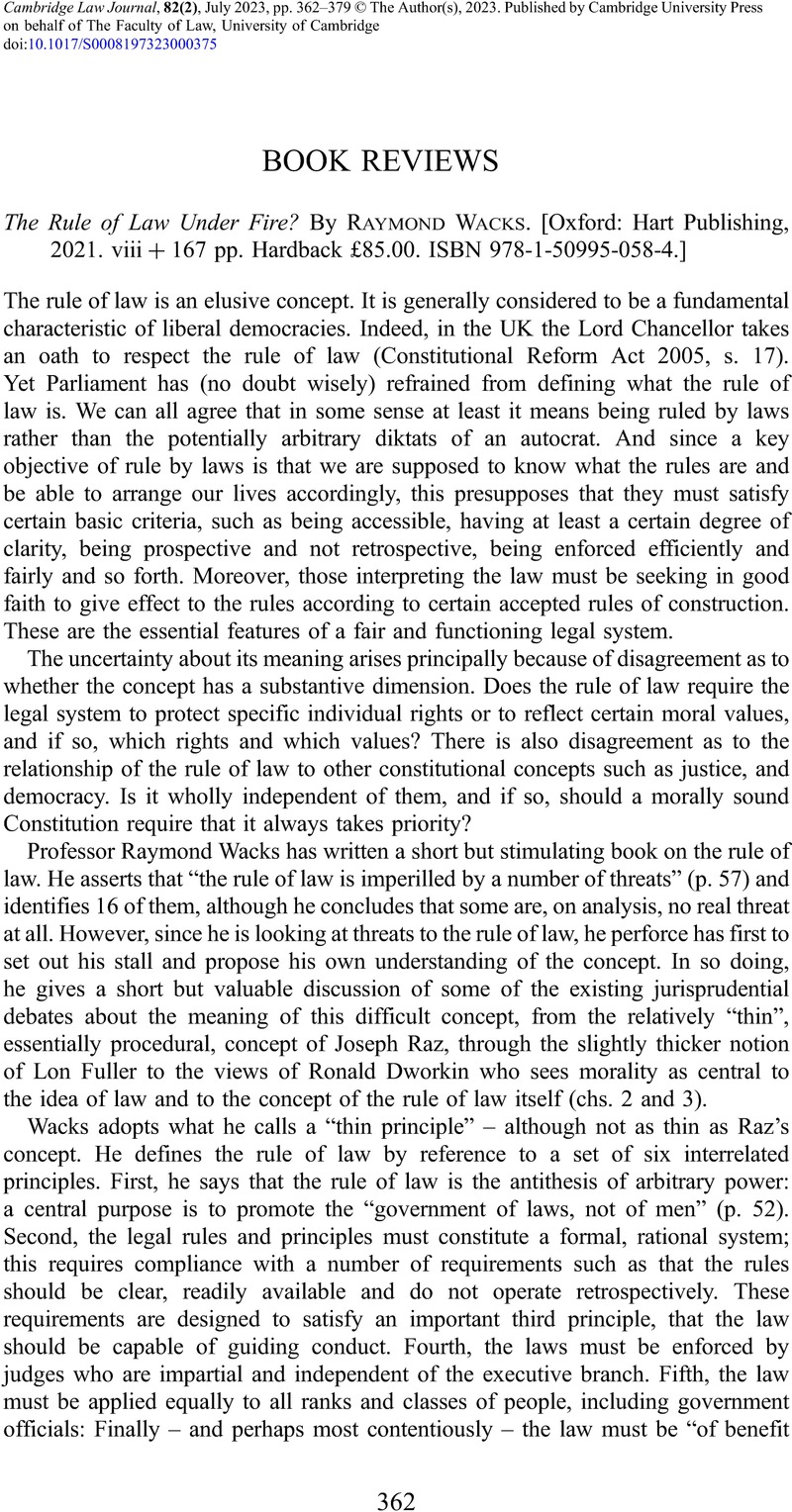No CrossRef data available.
Article contents
The Rule of Law Under Fire? By Raymond Wacks. [Oxford: Hart Publishing, 2021. viii + 167 pp. Hardback £85.00. ISBN 978-1-50995-058-4.]
Review products
The Rule of Law Under Fire? By Raymond Wacks. [Oxford: Hart Publishing, 2021. viii + 167 pp. Hardback £85.00. ISBN 978-1-50995-058-4.]
Published online by Cambridge University Press: 21 September 2023
Abstract
An abstract is not available for this content so a preview has been provided. Please use the Get access link above for information on how to access this content.

- Type
- Book Review
- Information
- Copyright
- © The Author(s), 2023. Published by Cambridge University Press on behalf of The Faculty of Law, University of Cambridge


